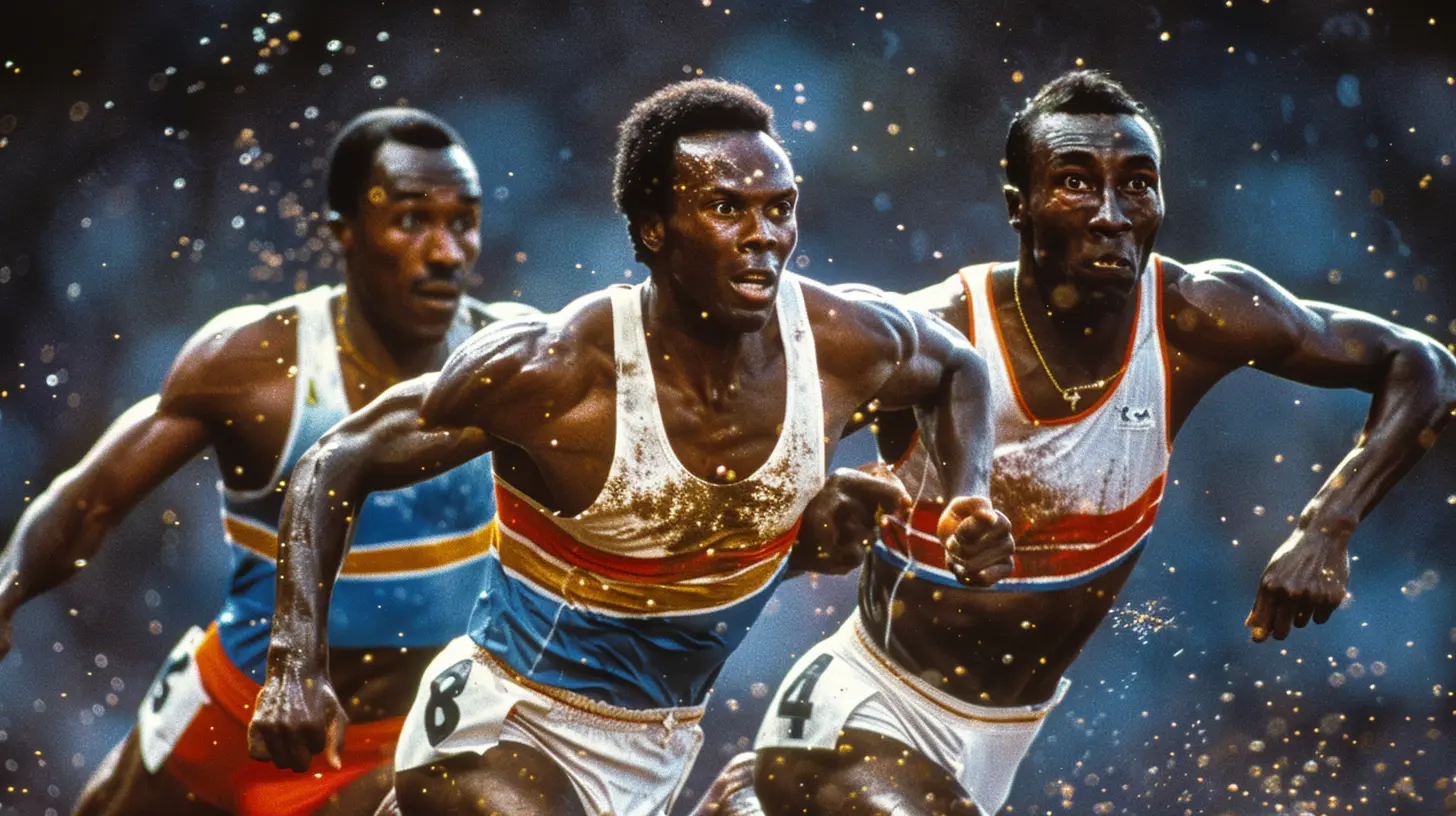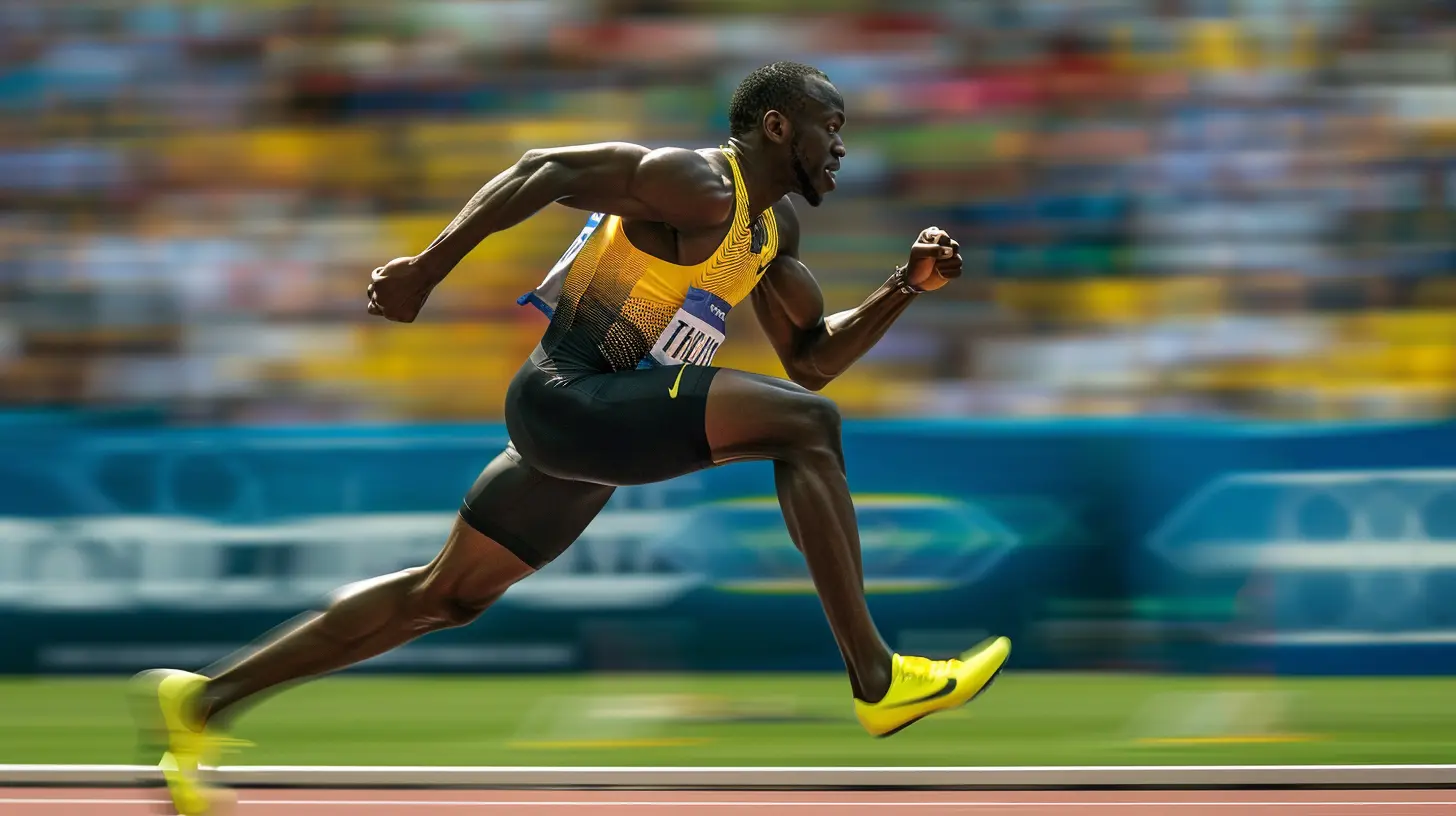The Science Behind Successful Sprinting Techniques
14 November 2025
Sprinting—it's raw power meeting explosive grace. It’s the split-second art of human speed, where milliseconds make the difference between gold and going home empty-handed. But beneath the thunder of feet pounding the track, there’s a whole symphony of science at play.
Ever wondered what really fuels those lightning-fast finishes? Why some athletes seem to glide like the wind while others grind and struggle? Let’s tear into the bones and muscles of sprinting and unpack what makes these lightning bolts in human form tick. Welcome to the beautifully complex—and downright fascinating—world of sprinting science.
⚡ Sprinting: More Than Just Running Fast
Sprinting isn’t just about running as fast as possible—at least, not in the way most people think. Sure, it's about speed, but the path to speed is paved with biomechanics, neuromuscular coordination, and razor-sharp technique.Speed is not just a gift. It’s built, refined, and unleashed with focused, scientific precision.
Think of a sprinter as a Formula 1 car. Every piece must be fine-tuned. From the engine (muscles and energy systems) to the tires on pavement (feet hitting the track), everything must work in harmony. When a sprinter hits their stride, it's poetry in motion mixed with physics and brute force.
🧠 The Brain-Body Connection: Where Speed Starts
Let’s kick off with the control tower—the brain.Before the legs explode out of the blocks, it's the brain that sends the signal. A sprinter’s central nervous system (CNS) must fire rapidly and efficiently. We're talking lightning-fast messages from brain to muscle—telling the glutes to clench, the knees to drive, the arms to swing like pendulums.
The faster the nervous system can send messages down the spinal superhighway, the faster the reaction time at the starting blocks.
And reaction time? It’s often the first battle in a sprint. You’re not just racing against time. You’re racing against human reflexes—and milliseconds mean medals.
⚙️ The Mechanics of Movement: What Happens in a Sprint
Now, let’s get into the nuts and bolts.A sprint has three major phases:
1. The Start
2. The Acceleration Phase
3. The Top Speed & Maintenance Phase
Each phase is a biomechanical masterpiece. Let’s break them down.
🔥 Phase 1: The Start – Explosive Power Unleashed
Ever watched a cheetah pounce? That’s the kind of explosive force we’re talking about when a sprinter leaves the blocks.The ideal start is all about angle, force, and timing.
Sprinters want a forward lean of around 45 degrees right out of the blocks. Why? It maximizes propulsion and keeps their center of gravity aligned with the drive forward.
Big muscles like the glutes, hamstrings, and quads come into play here—especially during that first, all-important push. These are your engine parts. A sprinter activates them like rocket boosters to create forward momentum.
And don’t forget the arms. They act like pistons, generating torque and helping rotate the torso. It’s not just about legs—those swinging elbows are a core part of the launch sequence.
⚡ Phase 2: Acceleration – Building the Speed Pyramid
After that electric start, it’s time to accelerate.This is where the sprinter begins to stand more upright with each stride. The body gradually moves from that steep forward lean to a more vertical position. Every stride gets a little longer, a little faster.
But here's the trick: it's not just about longer strides. It's about stride frequency (how fast you can turn over your legs) and stride length working together.
Too much of one without the other? You crash. Too little of both? You fall behind.
During acceleration, ground contact time is key. The less time your foot spends on the track, the better. Elite sprinters spend less than 0.1 seconds on the ground per step. Insane, right?
🏁 Phase 3: Top Speed & Maintenance – The Fight Against Fatigue
Now you're flying.By the time a sprinter reaches top speed—usually around 60 to 70 meters—they’re gliding. But don’t be fooled. It takes a TON of effort to maintain that velocity.
What’s happening here?
- Minimal vertical bounce: Sprinters aim to stay low to the ground, not bouncing like a pogo stick.
- Efficient arm drive: Arms stay tight and aggressive, counterbalancing leg movement.
- Powerful knee drive: Knees shoot up high and fast, helping generate more force with every step.
But the sprint doesn’t end at top speed. In fact, that final 20-30 meters is a decay phase. Your body is yelling, "I’m done," but champions dig deep. They maintain form, focus, and fire all the way through the line.
🏋️ Strength Training: The Engine Upgrade
Want to sprint faster? Hit the gym.Powerful, explosive strength comes from heavy compound movements—think squats, deadlifts, power cleans. These lifts build the fast-twitch muscle fibers that fuel short bursts of speed.
And don’t sleep on plyometrics—box jumps, bounding drills, med ball throws. These simulate that stretch-shortening cycle that happens during sprinting. It’s all about generating maximum force in minimum time.
No engine runs efficiently without power. The stronger the legs, the harder they can push against the ground. And guess what? More push = more speed.
🧬 Genetics vs. Training: Nature and Nurture Take the Track
Alright, let’s address the elephant in the room.Are some people just born to sprint?
Yep—genetics play a big role. Fast-twitch muscle dominance, tendon structure, limb length, even how quickly your nervous system fires—it’s all partially written in your DNA.
But...
Training is the great equalizer. No one becomes elite by chance. Hard work, precise technique, smart training, and recovery is what turns good into great.
You might not be Usain Bolt, but with the right system, you can become your fastest version. And that’s the real win.
🌬️ Breathing and Relaxation: The Secret Weapons
You’d be surprised how many athletes forget to breathe. Proper breathing during a sprint keeps oxygen flowing, reduces tension, and maintains focus.Relaxation sounds counterintuitive, right? You’re sprinting full throttle—why be relaxed?
But here’s the kicker: tension slows you down. The best sprinters look effortless because they are. They’ve trained their bodies to be explosive yet fluid, powerful yet poised. That balance is key.
Clenched fists? Tight facial muscles? They all waste energy. Relaxed runners cover more ground with less effort.
🧠 Sprinting Is Mental: The Psychology of Speed
Speed isn’t just physical—it’s psychological.From the moment the sprinter steps onto the track, their mind is racing. Confidence, laser focus, and controlled aggression can make or break a race.
Visualization techniques, mindfulness, and mental rehearsal are all tools in a sprinter's kit.
The brain needs to believe what the body is about to do. If you hesitate, even for a split second, it shows up in your time.
🧪 The Role of Technology and Data
Sprinting has entered the digital age.Now athletes are using:
- High-speed cameras
- Force plates
- Wearable tech
- Biomechanical analysis software
These tools track everything—stride length, angular velocity, ground reaction force. It’s like having a pit crew for your performance.
With data, training becomes surgical. Weak points are exposed. Strengths are amplified. It’s science applied in real-time.
🥇 Real World Application: Lessons from the Greats
You don’t get faster by just watching videos of Bolt or Flo-Jo, but there’s wisdom in their form.- Usain Bolt’s stride frequency and long legs gave him unmatched top speed.
- Florence Griffith-Joyner’s technique was a masterclass in stride mechanics and style.
- Carl Lewis’s discipline and rhythm were clinical and consistent.
They didn’t just run fast. They ran smart. They trained smarter. They understood their bodies like a scientist conducting a lifelong experiment.
🚀 Putting It All Together: Your Sprinting Blueprint
So what’s the secret sauce?Here’s a quick-fire checklist:
✅ Nail your start with explosive power and perfect angles
✅ Accelerate with smooth stride transitions
✅ Stay tall and strong during top speed
✅ Build strength and power in the gym
✅ Keep your CNS sharp with reaction drills
✅ Stay loose, breathe easy, and trust your form
✅ Use data and feedback to refine technique
✅ Train your mind as hard as your body
Sprinting success isn’t magic. It’s method.
Final Thoughts: The Art and Science of Speed
Sprinting isn’t just a race. It’s a test of physics, physiology, and mental fortitude. Every stride is a blend of chaos and precision. Every race is a showcase of what the human body, when trained to perfection, can truly do.Behind every nine-second sprint is a lifetime of milliseconds. A thousand reps. A million corrections. A billion brain-to-muscle signals.
So the next time you see a sprinter shoot out of the blocks, remember—it’s not just speed. It’s science. Beautiful, relentless, poetic science.
all images in this post were generated using AI tools
Category:
AthleticsAuthor:

Uziel Franco
Discussion
rate this article
1 comments
Tristan McVey
Sprinting isn't just about speed; it's a blend of finesse and physics. If you're not perfecting your technique, don’t expect to outrun anyone!
November 14, 2025 at 5:40 AM
![The Game-Changer: How [Player Name] is Revolutionizing Their Position](/pictures/blog/small/the-game-changer-how-player-name-is-revolutionizing-their-position_2.webp)

